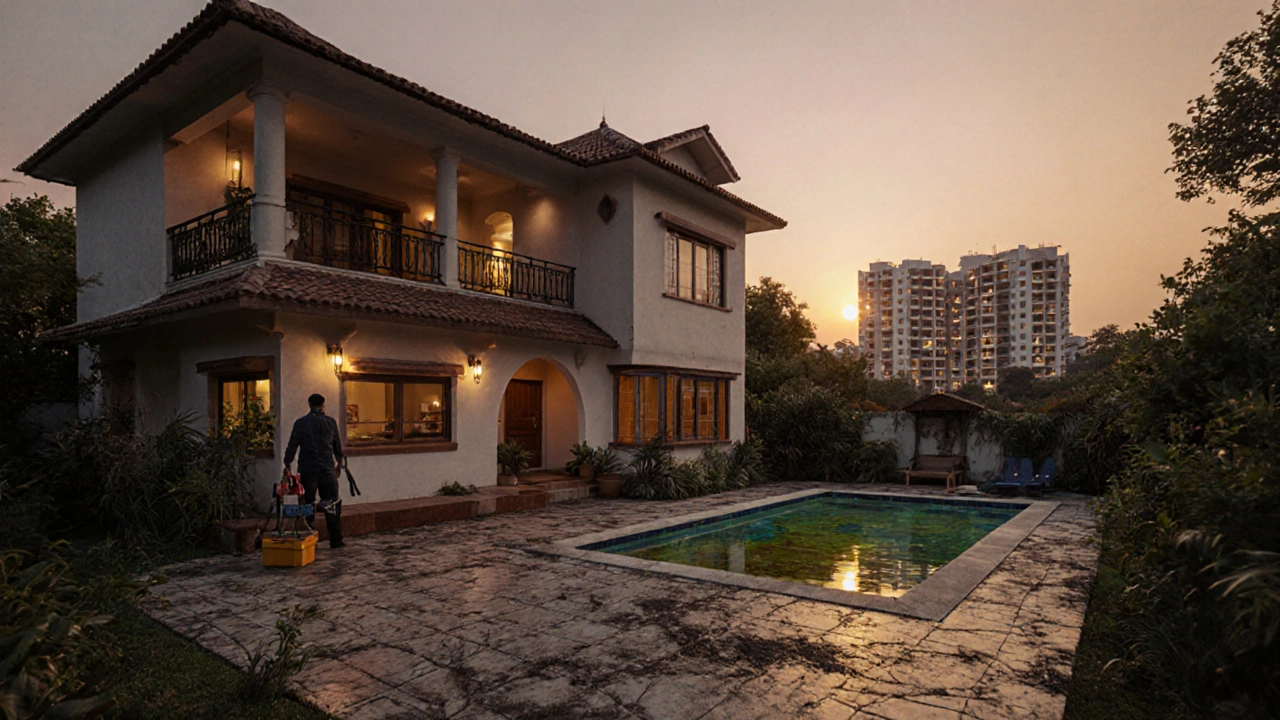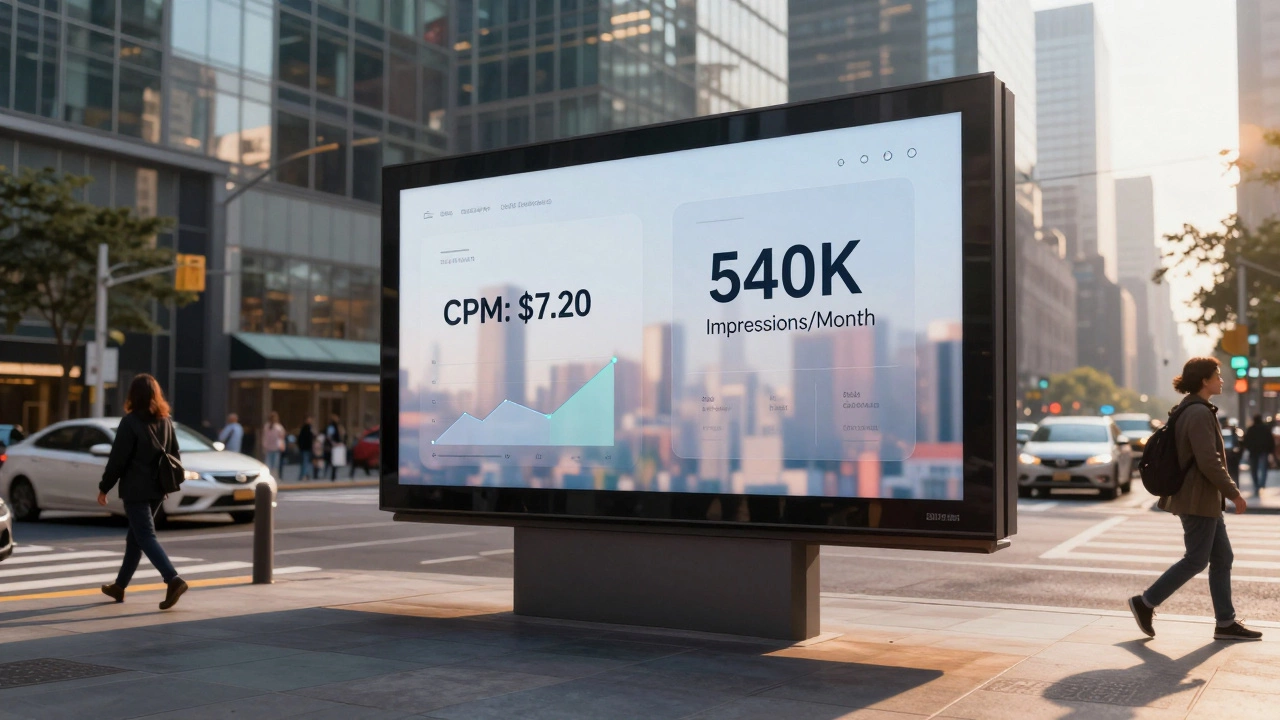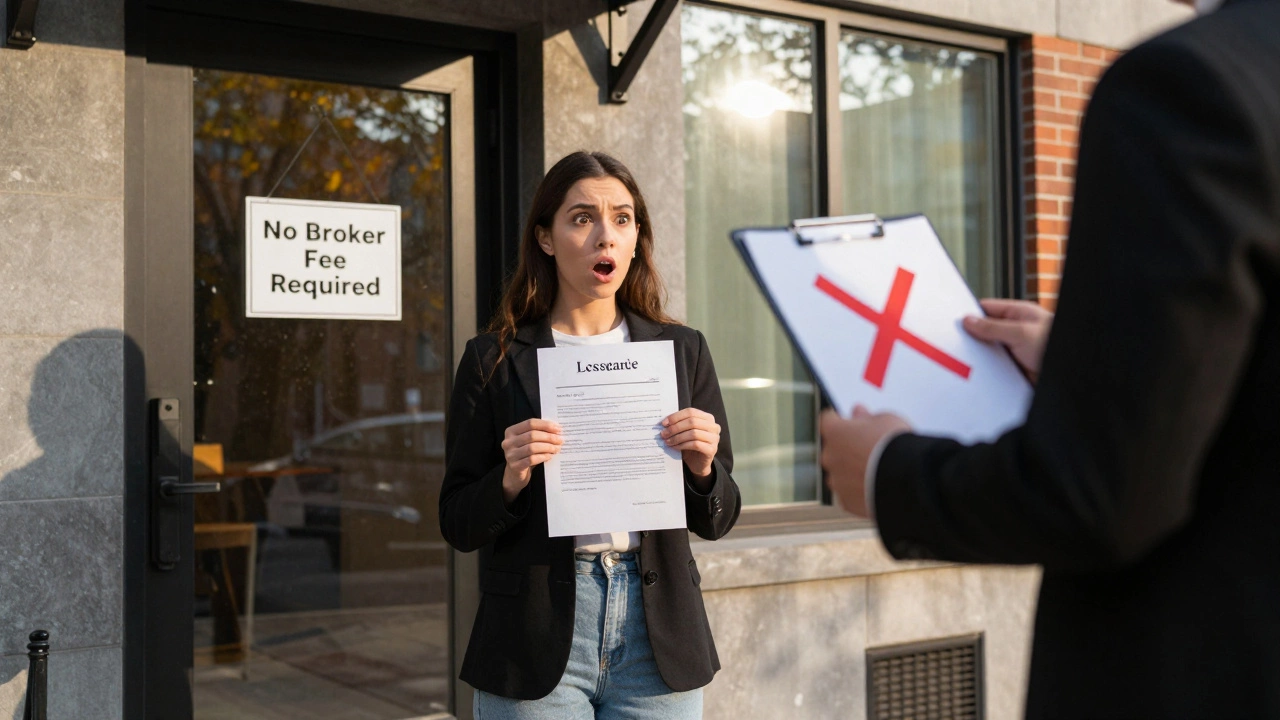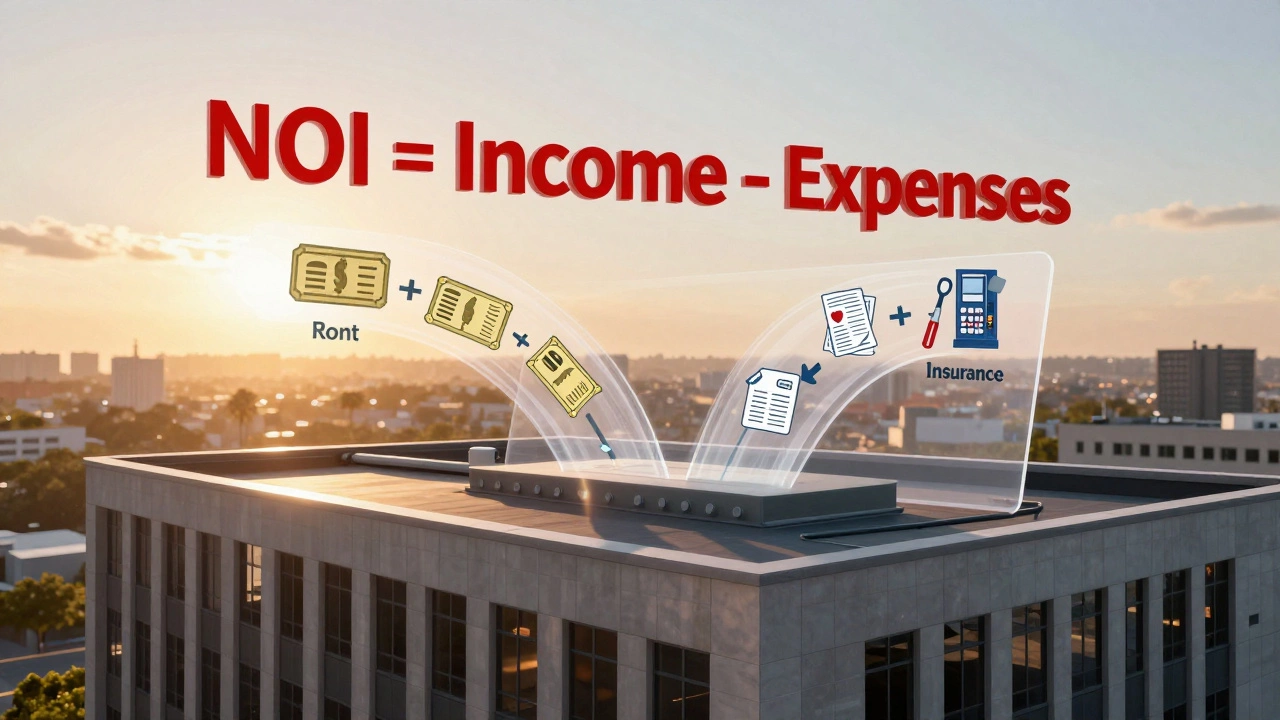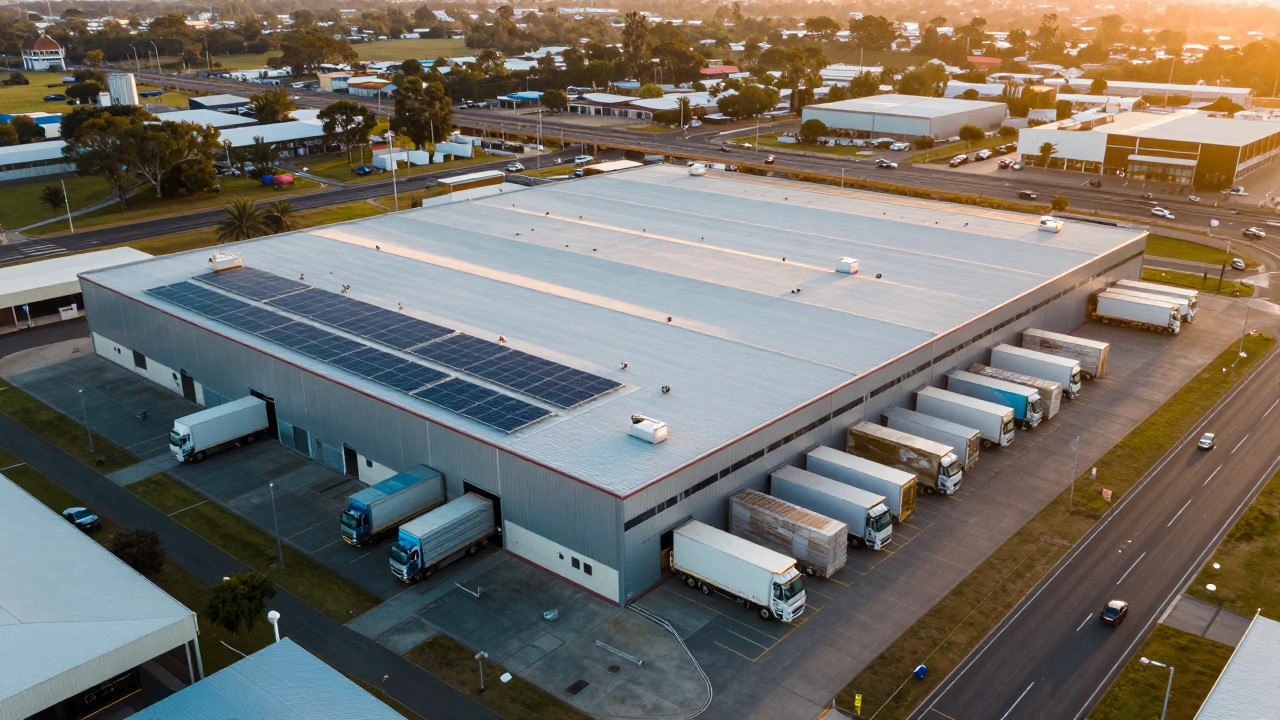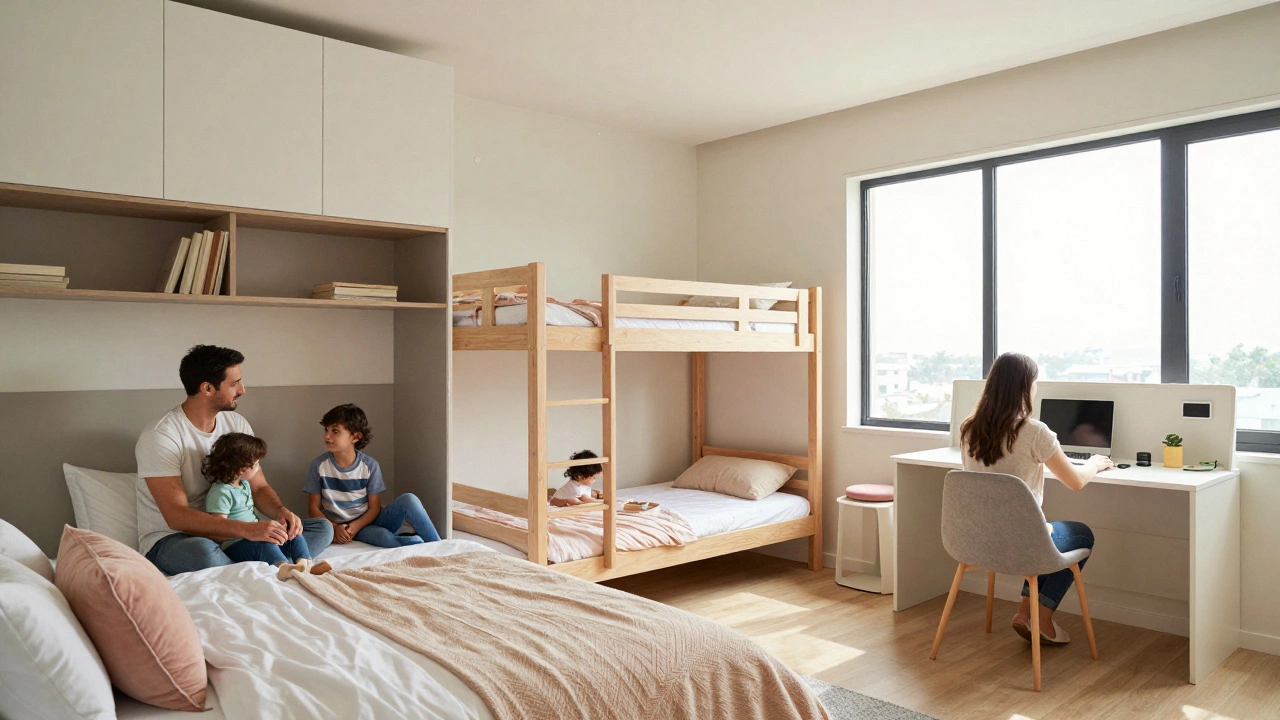Villa vs Apartment Cost Calculator
Calculate Your Real Costs
Buying a villa sounds like a dream-private gardens, spacious rooms, no shared walls. But for every person who loves the peace of a villa, there’s another who regrets the hidden costs and headaches that come with it. If you’re considering a villa for sale, you need to know what you’re signing up for beyond the pretty photos and wide driveways.
High Upfront and Ongoing Costs
Villas aren’t just expensive to buy-they’re expensive to keep. In most markets, a villa costs 30% to 60% more than a comparable apartment in the same neighborhood. That’s not just the purchase price. You’re also paying more for land taxes, property insurance, and utility hookups. A 4,000-square-foot villa in suburban Bangalore might cost ₹1.8 crore, while a similar-sized apartment nearby is ₹1.1 crore. That’s a ₹70 lakh difference before you even move in.
Then there’s maintenance. A villa has more surfaces to paint, more tiles to clean, more plumbing to fix. A single leak in the rooftop terrace can cost ₹50,000 to repair. A broken irrigation system for the garden? Another ₹20,000. Most villa owners don’t realize they’re paying ₹15,000 to ₹30,000 a year just to keep the place from falling apart. Apartments? Those costs are covered by maintenance fees you already pay. Villas? You’re on your own.
Time-Consuming Maintenance
Who mows the lawn? Who cleans the pool? Who fixes the gate motor when it breaks? If you work full-time or travel often, a villa can become a second job. Unlike apartments with building staff, villas have no maintenance team. You either hire help or do it yourself.
One homeowner in Gurgaon told me he spends 10 hours a month just on villa upkeep-cleaning gutters, checking for termites, servicing the water purifier, replacing outdoor lights. That’s 120 hours a year. For someone with a busy schedule, that’s not a luxury-it’s a burden. And if you’re away for a month, mold can grow in the bathroom, ants can invade the kitchen, and the garden turns into a jungle. You come back to a mess you didn’t create but now have to fix.
Limited Resale Liquidity
Want to sell your villa quickly? Good luck. Apartments sell faster because they’re easier to finance, easier to rent, and appeal to a wider pool of buyers-families, young professionals, investors. Villas? They’re niche. Buyers need to have enough cash, want privacy, and don’t mind the upkeep. That narrows your market.
In 2024, villas in Pune took an average of 8 months to sell. Apartments in the same area? 4 months. And if you need to sell fast because of a job change or emergency, you might have to drop your price by 15-20%. That’s a huge hit when you’ve spent years building equity.
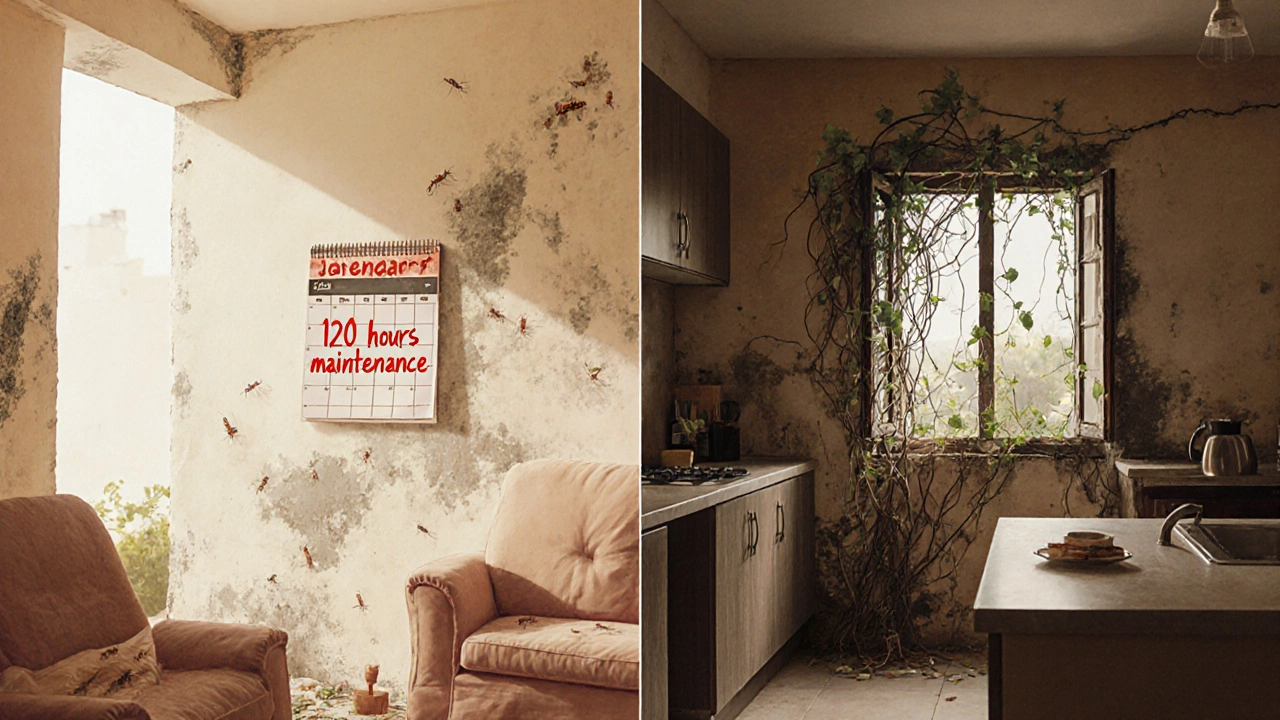
Isolation and Lack of Community
Villas are designed for privacy. But privacy doesn’t always mean comfort. Many villa owners feel lonely. There’s no lobby to chat in, no kids playing in the courtyard, no neighbors dropping by for tea. You’re surrounded by space, but not by community.
Parents with young kids miss the safety of shared playgrounds. Retirees miss the daily interactions that come with apartment complexes. A survey by the Indian Real Estate Association found that 42% of villa owners in Tier-1 cities felt socially disconnected within two years of moving in. That’s not a small number. A house isn’t just bricks and mortar-it’s where you build relationships. Villas often make that harder.
Security Challenges
More space means more points of entry. A villa with a 100-foot frontage, multiple gates, and a large backyard is harder to secure than a gated apartment with 24/7 guards and CCTV. You can install cameras and alarms, but they cost money-and they’re not foolproof.
Thieves target villas because they assume no one’s home. A family in Hyderabad lost ₹3 lakh in jewelry in 2023 after a break-in during a weekend trip. Their villa had no perimeter fence and no guard. Their apartment-building neighbor? No break-ins in five years. Security isn’t just about locks-it’s about visibility, patrols, and community watch. Villas rarely offer that.
Utility and Infrastructure Problems
Many villas are built on the edges of cities where infrastructure lags. Water supply? Unreliable. Electricity? Frequent outages. Sewage? Sometimes it’s a septic tank that needs emptying every 6-12 months (costing ₹8,000-₹15,000 per service). Internet? Slow or spotty because fiber hasn’t reached the area yet.
One buyer in Noida thought they were getting a “luxury villa” until they realized the water pump ran 3 hours a day just to fill the overhead tank. The electricity bill was ₹12,000 a month-not because of ACs, but because of constant water pumps and inverters. Apartments in the same city? Grid-connected, stable, and included in maintenance charges.
Harder to Rent Out
Thinking of renting your villa when you travel? It’s trickier than renting an apartment. Tenants expect amenities-gym, pool, parking, security. Villas rarely have them unless you build them yourself. And even then, renters are wary. They don’t want to be responsible for a garden, a pool, or a broken water heater.
On average, villa rental yields are 2-3% per year. Apartment yields? 4-5%. That’s because apartments attract more tenants and have lower vacancy rates. A villa might sit empty for 4-6 months a year while you wait for the “right” tenant. That’s lost income-and more maintenance costs piling up.
Not Ideal for Aging in Place
As you get older, stairs, long hallways, and uneven driveways become obstacles. Many villas have multiple levels, steep steps to the garden, or no elevators. Renovating for accessibility-adding ramps, grab bars, stair lifts-can cost ₹5-10 lakh. Apartments with elevators and flat layouts are far easier to adapt.
One couple in Chennai bought a villa at 50, thinking they’d live there forever. At 65, they couldn’t climb the three steps to the front door anymore. They sold it for less than they paid and moved into a ground-floor apartment. The villa sat empty for a year before selling. They lost money and peace of mind.
When a Villa Makes Sense
None of this means villas are bad. They’re just not for everyone. If you have a large family, love gardening, work from home and need quiet, or plan to live there for 15+ years, a villa can be perfect. But if you’re young, mobile, budget-conscious, or value convenience over space-you’re better off with an apartment.
The real mistake isn’t buying a villa. It’s buying one without understanding what it really costs-time, money, energy, and peace.
Are villas more expensive to maintain than apartments?
Yes, significantly. Villas require you to pay for all maintenance yourself-landscaping, pool cleaning, roof repairs, plumbing, pest control, and security systems. Apartments include these in monthly maintenance fees, which are typically ₹3-5 per sq.ft. A 3,000 sq.ft. villa might cost ₹20,000-₹40,000 a year in upkeep alone, while a similar-sized apartment costs ₹9,000-₹15,000 annually.
Can I rent out a villa easily?
Not easily. Villas have lower rental demand because tenants prefer amenities like gyms, elevators, and 24/7 security. Vacancy rates for villas are 30-40% higher than for apartments. Rental yields are also lower-2-3% per year versus 4-5% for apartments. You’ll need to invest in furnishing, landscaping, and security to attract tenants, and even then, you’ll wait longer.
Do villas appreciate in value faster than apartments?
Not necessarily. In most Indian cities, apartments in well-connected areas appreciate faster because of higher demand and better liquidity. Villas appreciate only if they’re in premium, well-planned townships with good infrastructure. In fringe areas, villa prices often stagnate or even drop due to poor connectivity and lack of buyers.
Is a villa a good investment for retirement?
Only if you’re physically able to manage it. Villas require more physical effort-climbing stairs, maintaining gardens, fixing things. As you age, these tasks become harder. Many retirees end up selling their villas because they can’t handle upkeep. Apartments with elevators, security, and maintenance staff are far more practical for aging in place.
What’s the biggest hidden cost of owning a villa?
Time. Most people focus on money, but the biggest hidden cost is your personal time. A villa owner spends 8-12 hours a month on maintenance tasks. That’s 100+ hours a year-time you could spend with family, working, or relaxing. If you don’t have the time or energy, a villa becomes a source of stress, not comfort.
If you’re still considering a villa, ask yourself: Do I have the money for repairs? The time for upkeep? The patience for slow resale? If the answer isn’t a clear yes across all three, look at apartments instead. The dream of a villa is real-but so are the realities.
